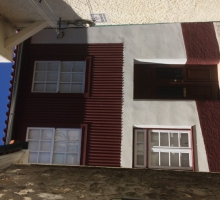This is the most important collection of archaeological remains discovered in Lamego so far, witnessing the dynamic of urban transformation, which occurred for more than two thousand years of the city history.
The archaeological works performed on this building, located near the Porta dos Figos, provided the discovery and enhancement of remains from several periods, placed in overlying layers, since the most remote Roman occupation from the 1st to 5th centuries, passing by the Suevi-Visigoth period (5th-7th cent.) in which the city emerged as episcopal see, until the presence of a Christian cemetery from the 9th-11th centuries and medieval city wall itself, built from the 12th-13th centuries on.
Inside, the visitor has a path that allows the reading of archaeological structures accompanied by the exhibition of objects found at the site, highlighted by an important Roman monetary treasure from the 4
th
cent., as well as ceramic pieces, glass and other daily objects of people living there over time.
The presence of one of the skeletons associated to the preserved graves on site is complemented with the holographic projection in interactive screen, which allows the visitor to discover and explore the graveyard and the bioanthropological data of the individuals buried there. The visitor can watch a video-screening about the entire archaeological research process and the interpretation of the remains associated to the different moments of the city history.
Location: Lamego





